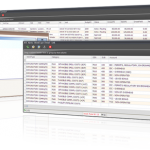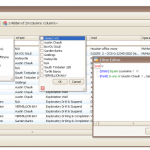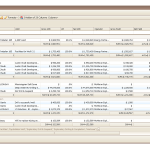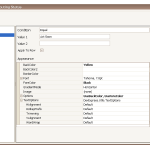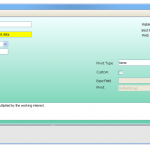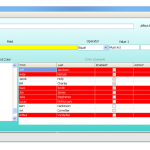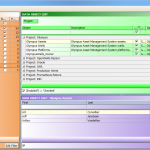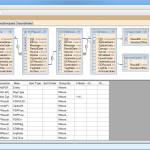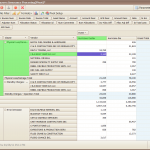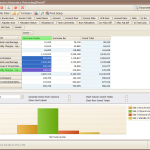Wrangler was created through a cooperative alliance with the oil industry to address the drawbacks of typical data warehousing solutions. After careful analysis, Wrangler was developed based on four powerful principles for information delivery:
Information Freshness – all datasets are dynamically delivered.
Focus on information vs. reporting – give the power to the decision makers.
Vertical silos must be broken down – data federation exponentially increases information value.
Information must be readily available – an efficient delivery framework accelerates the decision making process.
[tab name=’Features’]
Features:
- Wrangler resides in the system tray, and selecting Setup reveals all the Wrangler objects assigned to the particular user.
- Multiple-level sorting is intuitive and provides a powerful means of analyzing data.
- With the Wrangler object as denormalized as possible, filtering through the data is very important. Wrangler provides several ways to filter data, such as simple filtering, filtering using a check-box list, and advanced filtering.
- Decision makers have complete control over the hierarchy/grouping of their Wrangler object.
- Data can be aggregated at the group and total levels, allowing for unlimited levels of aggregation.
- Users have complete control over the display characteristics of their Wrangler dataset.
- Although Wrangler objects can be built with conditionally formatted fields, users can apply conditional formatting to address their own needs.
- Each column/field in the Wrangler object can be controlled by the end user.
- Any Wrangler object may be exported to .PDF, .RTF, or Excel format, complete with the column data typing.
- Although a Wrangler object can be distributed to every user, the end user has the ability to customize his/her view of the data.
- Advanced querying, including the use of stored procedures and parameterized queries.
- Wrangler data model allows for easy management of Wrangler objects into logical project groupings.
- Any field in a Wrangler object can be formatted to your end user’s needs.
- Adding business intelligence (BI) to your Wrangler objects is made easy through the use of conditional formatting.
- Wrangler objects can be linked together, allowing information to be federated through your organization.
[/tab]
[tab name=’Screen Shots’]
[/tab]
[tab name=”Downloads”]
Wrangler Quick Start Guide
Data Commute JPT Article
[/tab]
[end_tabset]
